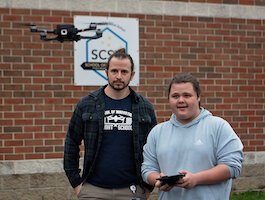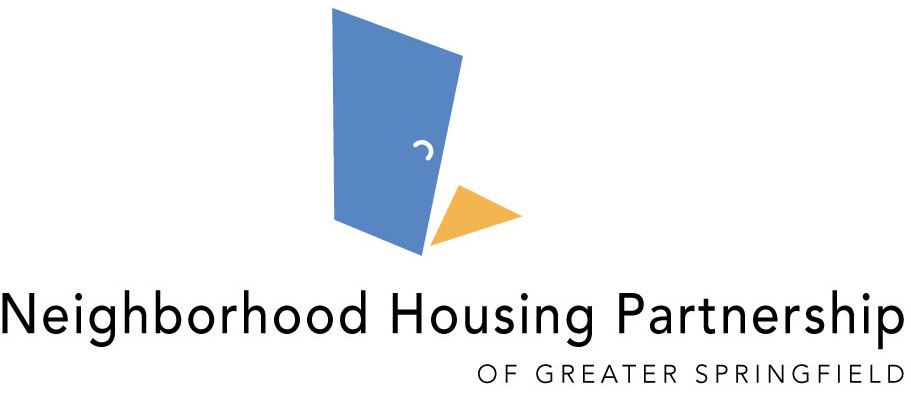SPRINGFIELD, Ohio — It’s the job of high school to help prepare students for the “real world,” providing them with valuable lessons to take into college, the workforce, and their futures. For some Springfield students, their high school curriculum is helping them reach even higher heights with drone classes.
The School of Innovation is a project-based learning center, located at 601 Selma Road. The School offers a hybrid model of hands-on learning and experiences in a non-traditional setting for Springfield City School District (SCSD) students in grades 9-12. Through specialized classes including phlebotomy, patient care, carpentry, welding, drones, and more, students engage in real-world problem-solving and develop advanced communication skills outside of the typical traditional education setting.
These specific pathways are in addition to their traditional curriculum offerings including English, math, science, social studies, health/physical education, business, fine arts, and world languages.
Matthew Perrine is a high school teacher, and one of his classes is in the unmanned aerial systems 1 and 2 drone classes at the School of Innovation. Perrine says the drone classes began last year, in January 2023.
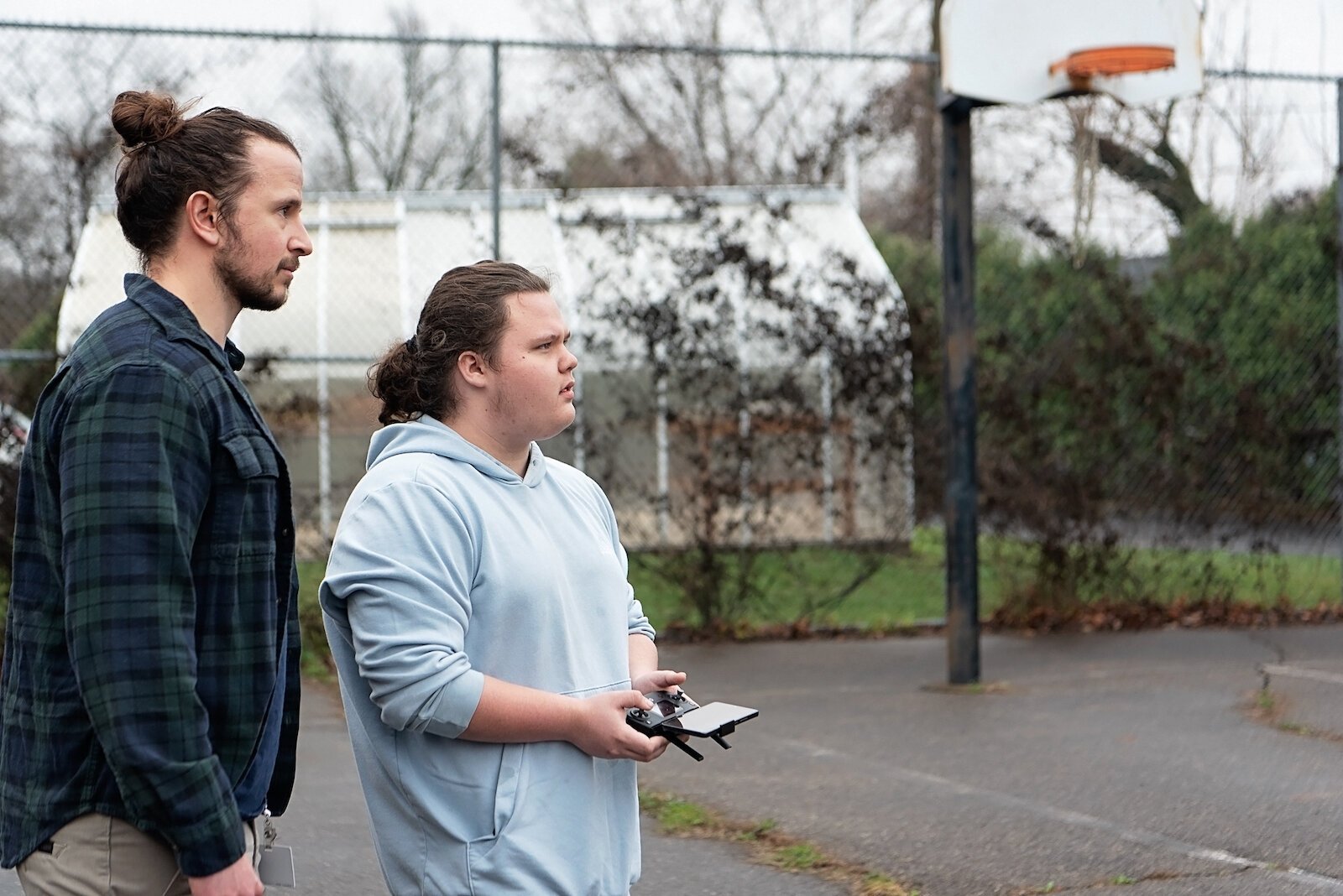
“One of the things we focus on here at the School of Innovation is helping students prepare for life after high school,” Perrine says. “We love to give them the ability to interact in a real-world setting at a job site.”
Perrine says these drone classes are an additional offering for high school students to gain experience working in settings similar to those they might later see in the workforce.
“We started this class to give students another avenue of success post-high school working in the unmanned aerial vehicle field,” Perrine says. “There are tons of jobs they can do, they can work with The Federal Aviation Administration (FAA), get different credentials to go work for airlines, work for companies flying drones as part of the ground crew or pilots themselves. There are a lot of opportunities.”
Within the Unmanned Aerial Systems 1 class, 10-12 grade students receive an introduction to drones, computerized drone flight simulation, indoor training for flight system orientation, depth perception, and non-GPS flight skills. In the class, students can gain knowledge and operational skills to pass the FAA remote pilot test and to help them become a licensed drone pilots.
Perrine says the first class focuses on the basics of drones, including the physics behind aerodynamics, how air density affects flight, and even how to read meteorology reports. Students also learn about communications pilots use, signs at airports, airspace maps, and more.
“After that first section, they actually have the knowledge to take their Part 107 licensure test to get a pilot’s license to fly a drone. They have their license to be able to work for a company and fly a drone for them,” Perrine says. “We want to take them one step further, and not just to have the knowledge of how to do it, but we want them to have the application of everything involved in that.

The following class, Unmanned Aerial Systems 2 class builds on the student’s knowledge of drones and continues their education on aircraft heavier than 20 pounds. Students participate in visual line-of-sight operations, understanding aircraft systems, performance parameters, emergency drills and procedures, meteorology and weather, and more, working towards their certification.
Students are able to take turns flying three drones, ranging in size and specifications. During the week, students complete their coursework, and every Friday, they are able to use the controls and manipulate the drones in flight. Students fly through obstacles like hula hoops, while their peers help direct them and act as visual observers.
Perrine has four students currently, and the goal for next year is to have five or six. Keeping the classes smaller helps create a nurturing, tight-knit environment.
“These classes are really hands-on, and you need to build relationships by talking about these things,” Perrine says. “As you go through the coursework, it is really intense. It’s made to be hard because the unmanned vehicle industry wants people who are go-getters and those who are willing to learn and want to do this.”
Leland Davis is an 11th-grade student and is one of Perrine’s students in his drone class. Davis says initially, the coursework was challenging, but now he’s enjoying it more.
“One of the favorite things I like in the class we just recently got into was the VFR (Visual Flight Rules) map,” Davis says. “Basically we look at it, and indicate the different aerospace and the different classes that go with them.”
Before the class, Davis says he had no familiarity with drones whatsoever and had never flown one.
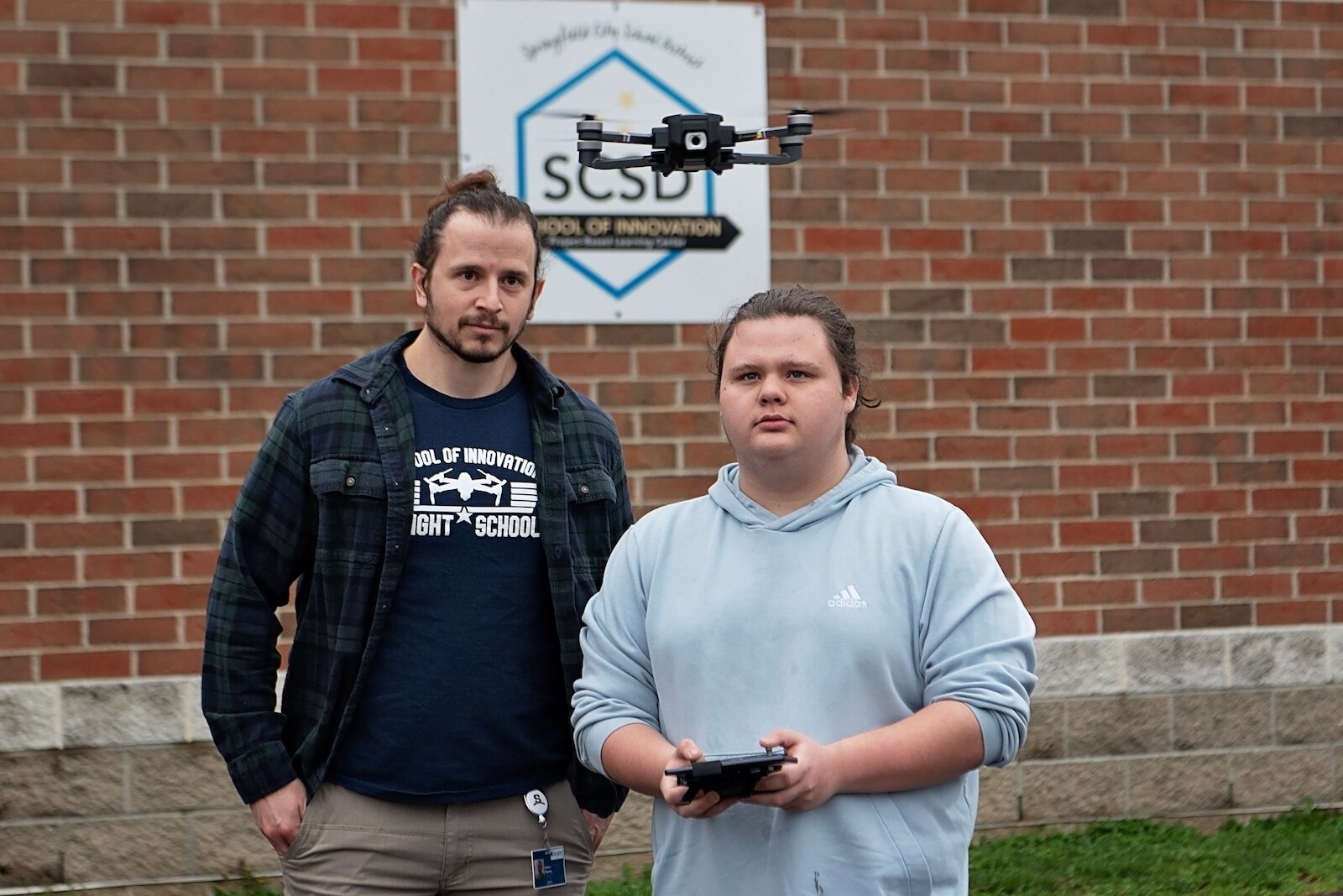
“Honestly, I used to think they were nothing but toys, and never really got into it before,” Davis says. “Once I got into class, I realized how many different steps it takes to actually be able to fly a drone, and the precautions it takes to fly a drone.”
Following high school, Davis hopes to study business in college, while also taking more drone classes, and is interested in learning more about beyond-line-of-sight drone flying. For now, he’s grateful to be in a unique, nurturing learning environment like the School of Innovation.
“I feel like having the connection between students and teachers really helps you develop the capability to learn a lot more than what you would on your own,” he says.
Although some of the general public might have a certain fear surrounding drones regarding safety issues, or misconceptions about the abilities of drones, Perrine says studying drones can provide valuable lessons inside and outside of the classroom. It’s also not something that is going to go away anytime soon.
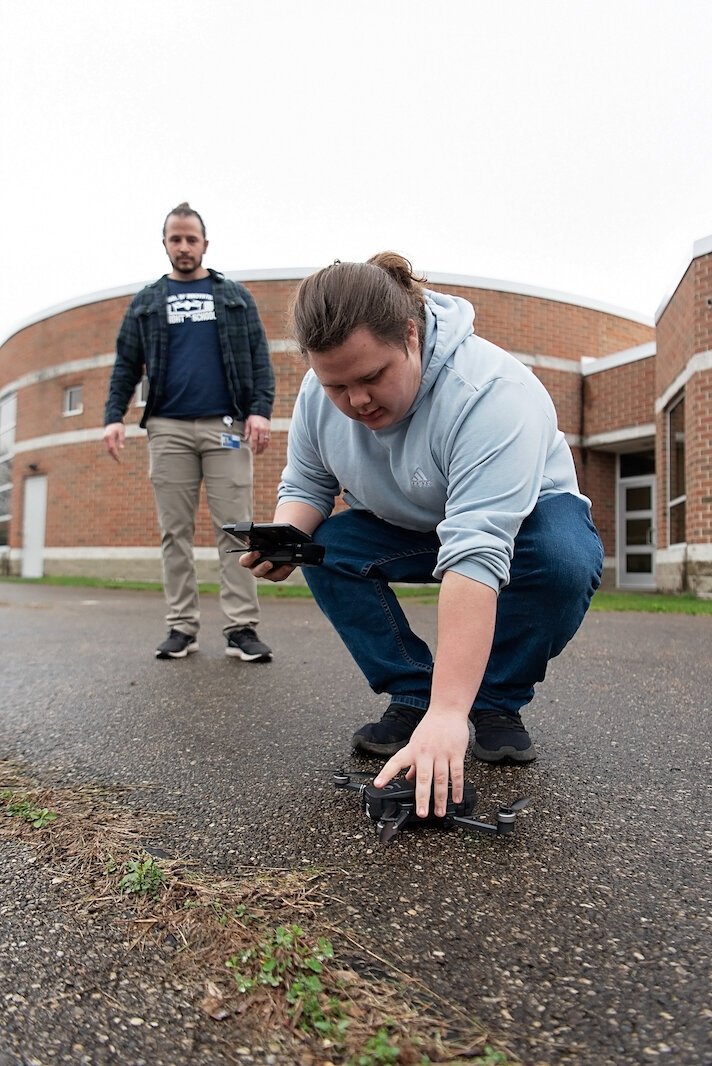
“Within the next 10 years, anything that’s in the air unless it has passengers on it, will be unmanned,” Perrine says. “This is something that’s going to be a huge industry going forward.”
Students are gaining real-world training and the skills required for tomorrow’s leading industries, enabling them to directly enter the commercial field in a brand new field, says Perrine.
When it comes to privacy issues, Perrine says students spend much of their curriculum learning about authorization and the laws surrounding flying drones over houses and different airspaces.
Next year, Perrine’s latest round of students will also be taught by his new student teacher, none other than Leland Davis. Whether or not this year’s graduating students decide to follow the drone field or not, Perrine says the lessons are applicable to other jobs too.
“Leland and I have talked about this personally, how the safety management systems, risk assessment, and crew resource management are literally business skills that you can use at a company,” Perrine says. “You look at your employees, assessing their risk, how they’re doing, looking at the workload, etc. These are things that students can use not only here, but in other career fields if they decide to be a manager in a factory, go into engineering, or if they’re in a hospital. Wherever they decide to go, those things apply right to that career.”
School of Innovation Students earn drone certifications
Three School of Innovation (SOI) students recently earned their certifications to fly
drones — before they have even earned their high school diplomas. Two seniors, Kylie Gourley and Sterling Wagner-Pyles, and a junior, Leland Davis, all passed their final test to earn their FAA – Part 107 pilot’s licenses for drones. They are all now certified to fly unmanned drones under 55 pounds.
The School of Innovation added unmanned aerial systems courses during the 2022-2023 school year. In addition to learning the mechanics of how to fly a drone, students in those courses also learn the physics behind aerodynamics, how air density affects flight, how to read meteorology reports, the communications pilots use, signs at airports, airspace maps and how to develop a mission plan before flying.
The career opportunities for drone pilots are becoming increasingly more available and in demand, including in the agriculture, land surveying, and photography industries. After completing the courses at the School of Innovation several students have expressed interest in pursuing careers in unmanned aerial systems.
Hayward Middle School drone soccer team advances to nationals
The Hayward Middle School Drone Soccer Team is headed to the U.S. Drone Soccer 2024
National Championship in Virginia after a successful performance at Regionals. Hayward is now recognized as the first drone soccer team to represent Ohio at the national level.
Drone soccer is a high-speed, 3-dimensional competition that involves the building, maneuvering, and repairing of drones. One match is composed of three sets. To win a match, a team must defeat their opponent in at least two out of three sets. Each team has one striker, one goalie, one defender, and two forwards. The only person who can score is the striker. The rest of the team must protect the striker, while simultaneously keeping the other team’s striker from scoring.
The Hayward team consists of the following students: Collin Bostick (Striker and Defender), Neetchy Eugene (Striker and Forward), Christopher Moore (Goalie), Jamir Rolls (Forward), Anna Hollingsworth (Forward), Joesph Kelly (Defender), Eric Rofe (Defender) & Hart Underwood (Crew Member).
Hayward is coached by William Luke Kelly and David Zeller and sponsored by The Braxton Miller Foundation, which also sponsors the school’s XTreme Bots team.
“This sport is preparing our students for the fast, modern, and technological world that awaits them,” said Coach Kelly. “A special thank you to LaShonda Miller and The Braxton Miller Foundation for their support along this journey. Let’s bring a national championship home to Springfield!”
At the national competition on April 27, Hayward will face 15 other middle and high school teams from around the country, and an international team from Turkey.
Hayward made history earlier this school year when they hosted Ohio’s first official drone soccer match.
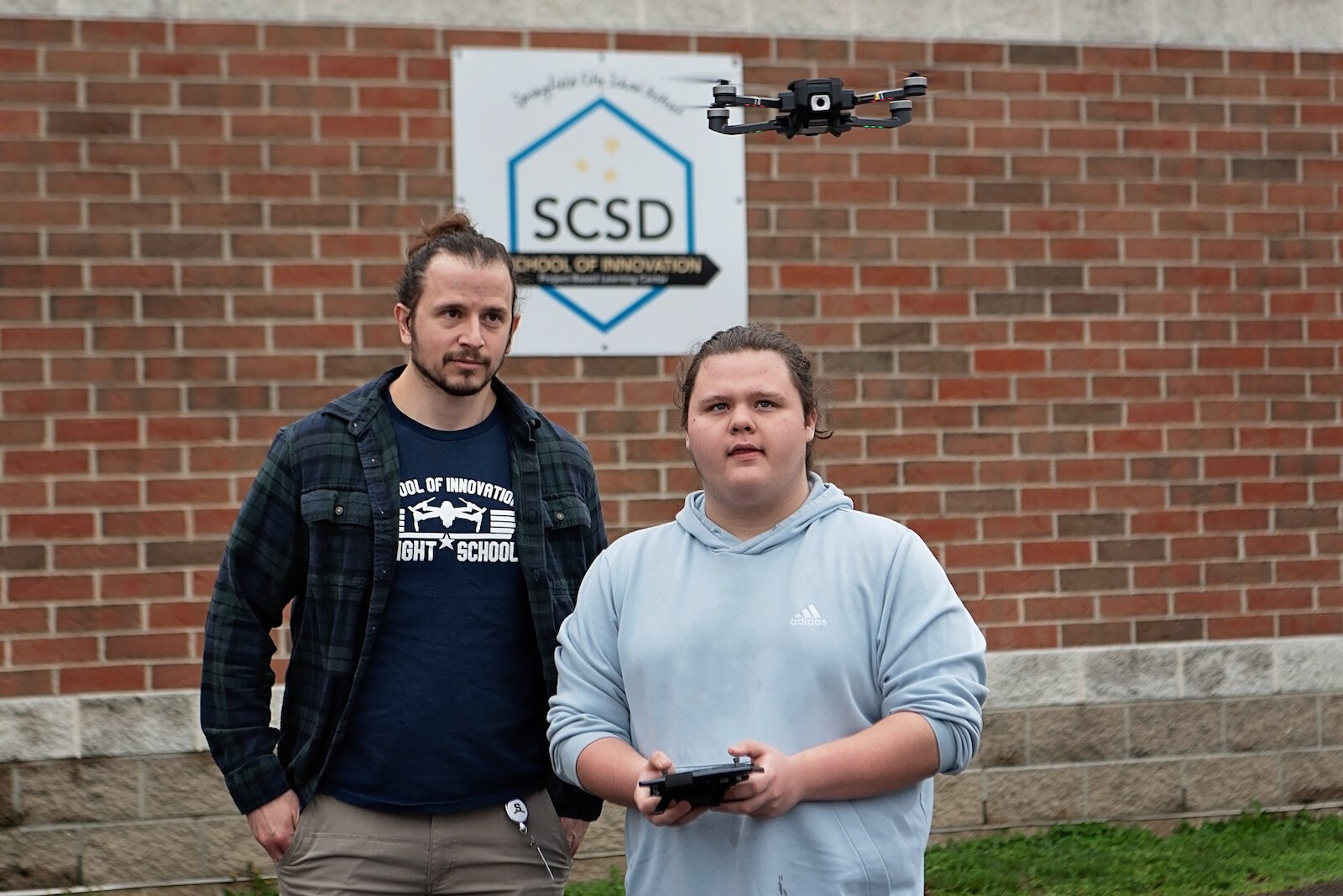
This story was updated April 18 to add new information about students at the School of Innovation.

